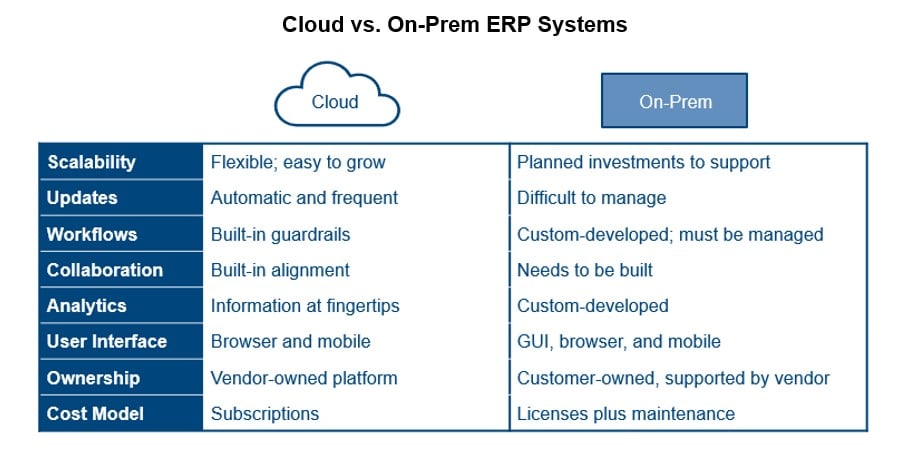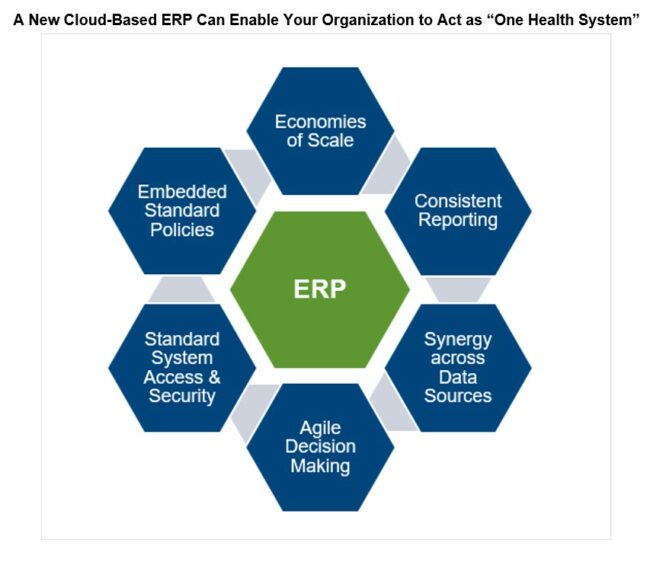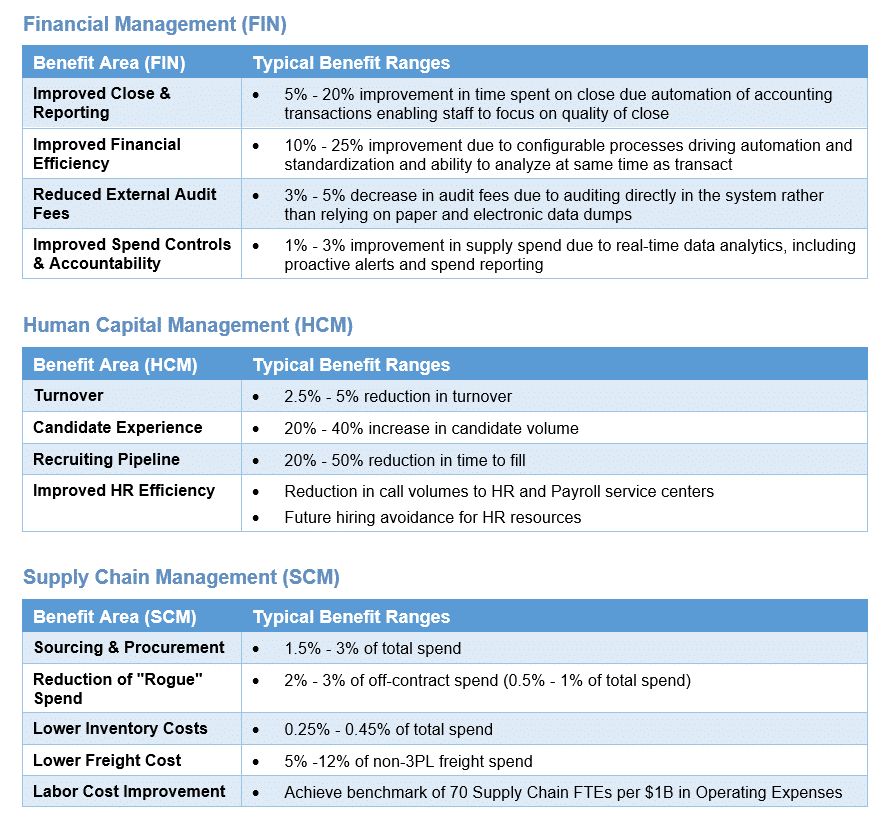Putting the “E” Back in ERP: How to Realize True Enterprise-Level Benefits

Healthcare continues to be plagued by financial, human resource, and supply chain inefficiencies. Hospitals and health systems involved in a merger or acquisition often continue to operate as separate organizations long after the event has been finalized, making it impossible to realize the intended efficiency gains and expected economies of scale. Even hospitals and health systems that haven’t been impacted by consolidation struggle to achieve consistency and standardization across the enterprise. While implementing a cloud-based ERP (Enterprise Resource Planning) solution can be an invaluable catalyst to enable standardization and consistency across the enterprise, the reality is that success is dependent on mindful and deliberate planning, the right execution, and an ongoing commitment to optimization and improvement.
The Benefits of Cloud-Based ERPs
Cloud-based ERP solutions represent a significant step forward compared to their legacy on-premise counterparts. They bring an entire enterprise into a single instance of the product: a single platform with a single data model. Finance (FIN), Human Capital Management (HCM), and Supply Chain Management (SCM) functions share common sets of values for content such as locations and cost centers, meaning the hospital or health system no longer has to manually map or translate redundant sets of values.

There is one system of record and one source of truth in cloud-based ERPs. This enables reporting and analytics to be available cross functionally and across the entire enterprise, empowering decision makers with accurate and actionable data in real time. Cloud-based ERPs also have only one point of entry, which makes a standard set of system access and security protocols possible. No longer does a new hire need to be provisioned in three or four separate systems, nor do terminated employees need to be deprovisioned from all of them. There is one point of authentication with permissions ruled by a single user security model.
These traits – coupled with the increased standardization, automation, and self-service inherent in cloud-based solutions – means implementing a new ERP can enable your organization to act as one health system, effectively putting the “E” back in “ERP.”

Typical ERP Benefit Ranges
There are a wide variety of potential benefits possible from a cloud-based ERP implementation, but the type and level of value ultimately realized will be highly dependent on specific factors unique to a given hospital or health system. For example, an organization that is largely manual today will have more opportunities for savings and cost reductions than a health system that is already highly automated. The areas that an organization specifically targets for improvement – and the ERP functionality that they enable – will also play a large role in the type and level of value possible.
With these important caveats in mind, the table below outlines some of the potential types and ranges of benefits we have seen in working with our hospital and health system clients.

Although the value proposition is clear, the reality is that not all hospitals and health systems are able to realize the full benefits of a cloud-based ERP. This is often more a result of the decisions the organization makes – and the way they plan for the implementation – than any shortcomings with the technology itself.
Keys to Achieving and Sustaining Value from a Cloud-Based ERP
Ensuring that a hospital or health system is in the best position to achieve the most value from a cloud-based ERP requires:
- Establishing performance measures and KPIs that are aligned with the organization’s overall goals for the implementation in advance (ideally even in advance of selecting the ERP solution).
- Investing the time and resources to determine how those measures and KPIs can be achieved given the realities of the organization’s daily business operations and the specific functionality of the new ERP solution. For example, if reducing off contract spending is a goal, what is an acceptable amount of off contract spending that should be targeted – and how can the organization then put the right controls in place to ensure the established target is not exceeded?
- Mapping all implementation and configuration decisions to the desired future state performance goals for the new ERP solution.
Realizing the benefits from a new cloud-based ERP is not a one-time event. Hospitals and health systems need to focus on measuring performance and making improvements throughout the initial implementation, but just as importantly, there has to be an unwavering commitment – and a defined process – for tracking performance against established targets after go-live. There may be significant value that can still be unlocked from a cloud-based ERP even among hospitals and health systems that have finished their initial implementation.
The Bottom Line
With mindful and deliberate planning, the right execution, and a strong commitment to ongoing improvement, hospitals and health systems can put the “E” back in ERP – and realize all the value associated with acting as one health system.
Contributors: Mike Cadwell, Jill Haselhorst, Susan Kruzan
Impact Advisors has been recognized by KLAS as a top provider of ERP Implementation Services and Financial Improvement Consulting, as well as receiving top marks in the recent KLAS Data & Analytics Services Report.
























